In this article, I share a use case on how to use
gamification to engage your disengaged employees and provide better motivation
plus a stickier learning experience. The use case showcases how gamification
aids you in creating a high impact training.
Ways To Offset Employee Disengagement With A Gamified
Learning Portal Approach
Introducing a series of use cases by EI Design on various
facets of online corporate training to create a more immersive learning
experience.
See how you can leverage on these use cases to enhance the
impact of your online training.
The Challenge
The problem of disengaged employees is very real and poses a
persisting challenge that can defeat the purpose of a training program. Despite
millions of dollars on training spend, L&D teams often lament on this
challenge.
So, the question is what learning strategies will excite the
learners and deliver the desired learning experience and performance gain or
even trigger behavioral change.
Gamification In Corporate Training To Your Rescue!
Why Gamification?
If you were to ask an employee the top two things that
motivate him or her, you are likely to hear recognition and rewards.
It comes as no surprise that what motivates employees needs
to be part of the learning strategies so that we have an engaged and motivated
audience for the training.
This is where gamification for learning fits in, and I will
showcase this in the gamification use case later in the
article.
What Is Gamification And How Can It Be Used Effectively
To Step-up The Online Training Impact?
Gamification in online training involves the use
of gaming principles to create an immersive and engaging learning experience.
It helps learners engage better, it is immersive, and
creates a higher recall, retention, and application of learning on the job.
Gamification techniques can be used effectively to provide a
fun-filled learning experience and:
- Meet
the learning outcomes, exactly as in traditional eLearning
- Help
learners apply their learning by handling real-life situations in a safe,
though controlled, environment
Game mechanics: At EI Design, our gamification
practice focuses on its use for serious learning so that at
the end of the learning journey, the learner meets specific outcomes.
Our courses are typically driven by a narrative or a story
for the learning path, and the key elements of the game mechanics that we use
are:
- Challenges
(learning goals)
- Levels
(learning path)
- Instant
feedback (to aid progress)
- Scores
(accomplishment and gratification)
- Badges
(for significant achievements)
- Leaderboards
(for analytics)
- Competition
(to assess where you stand against others)
- Collaboration
(when multiple teams play)
I will showcase a few of these techniques in the gamification
use case later in the article.
How Can You Use Gamification To Impact Learner Performance
And Behavior?
Besides being fun, engaging, and motivating, the right usage
of gamification techniques in online training help you meet the stipulated
learning outcomes.
It provides the following 5 key benefits:
- A
More Engaging Learning Experience Equals Higher Recall And Retention
The usage of gaming elements provides an immersive environment for learners wherein they learn and have fun. - The
Gamification Approaches Put The Learners In Relatable Situations That They
Would Encounter In Real-Life
It helps them practice safely as they understand the implications of their choices. Such learning experiences help them retain knowledge better than traditional learning strategies. - Effectively
Designed Gamified Courses Can Influence And Drive A Change In Learner
Behavior Over Time
Instant feedback helps learners understand if their decisions were right or wrong. Furthermore, gamification uses concepts of spaced repetition, which is an effective approach to bring about the desired change in their behavior. - Gamification
Can Be Applied To Address All Kinds Of Corporate Training
Great use cases of gamification include induction and onboarding, soft skills training, professional skills training, product training, sales training, and even compliance. - While
Gamification Resonates Well With The Millennials, You Would Be Surprised
To See Even Other Learner Profiles Respond Favorably
Badges, awards, and leaderboards draw diverse learner profiles, typically have higher engagement, and demonstrate better completion rates.
Now, I share a gamification use case that
features a combination of gamification and microlearning rendered in
a gamified learning portal format.
Key highlights of this gamification use case are:
- Learner
profile
Designed primarily for the millennial workforce, this gamification use case shows that the approach resonates well with other learner profiles too. - Use
of partial gamification techniques
- Leverage
on microlearning
The learning nuggets are provided to the learner through a gamified path and the assessments feature diverse formats of gamified quizzes.
Gamification Use Case: A Gamified Learning Portal
Featuring A Microlearning Approach For Induction And Onboarding
At EI Design, we had been using a
face-to-face training delivery for our Induction and Onboarding program
since our inception in 2002.
In the early years, when the team was small, this approach worked
well and enabled us to complete the exercise in time. With the significant
involvement of key stakeholders, the program delivered a high-impact training
and built strong bonds with new employees.
Challenge 1
As the team grew and the intake of new employees became
staggered, we started seeing challenges like:
- Delays
in timely completion
- Inadequate
time spent by managers
- Inconsistent
messaging
Action Taken
Nearly 6 years ago, we changed the model to a blended
format, with a significant part of the training going online, and this did
offset some of the challenges.
Challenge 2
However, after some time, I started getting feedback from
our Head of Operations and the HCM team that the program was not delivering the
desired value anymore.
The Reason?
In the last 3 years, our learner demographics had changed
dramatically to include millennials – over 70% of our team is now millennial.
They found the approach a bit too prescriptive, flat, and not engaging enough.
What Is the Solution That Can Deliver The Required Results?
A Gamified Learning Portal Featuring A Combination Of
Gamification And Microlearning
We went back to the drawing board and created a learning
design that will appeal to both learner profiles, millennial and
non-millennials. Additionally, we wanted to select an approach that will have a
longer shelf life.
Furthermore, it should enable us to update individual
nuggets with ease so that we can keep the information current.
The Outcome – A Gamified Learning Portal Based Approach
Featuring
- Blended
training
- Multi-device
support
- Learning
journey
The Key Highlights Of The Gamified Learning Portal Based
Approach
- Gamified
learning journey
- Microlearning
(Includes Virtual Reality and varied formats of video-based learning)
- Gamified
assessments
- Leaderboards
and stats on performance
- Social
learning
- Gateway
for further learning (to our learning exchange)
Here is a glimpse of the gamified learning journey featuring
multiple tracks to learn during the 4 weeks of the program:
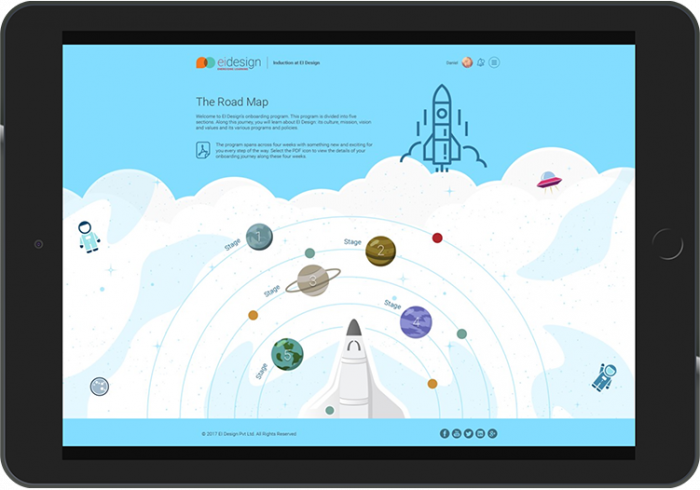
It includes stats on the learner’s performance,
leaderboards, and social learning as shown here:
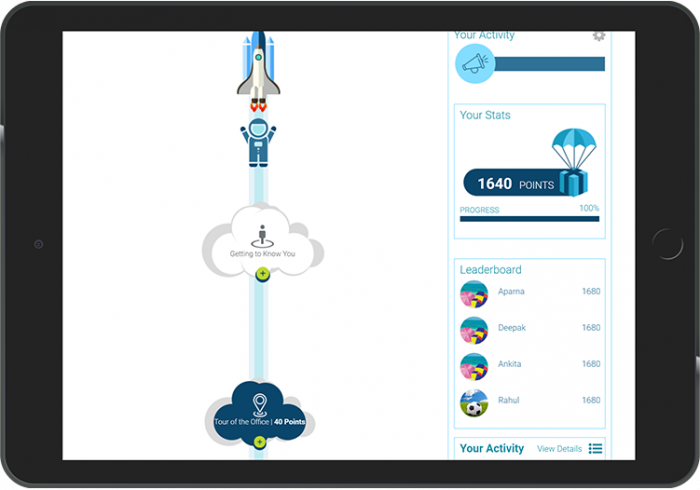
Here is a sample of one of the many gamified quizzes used in
the portal:
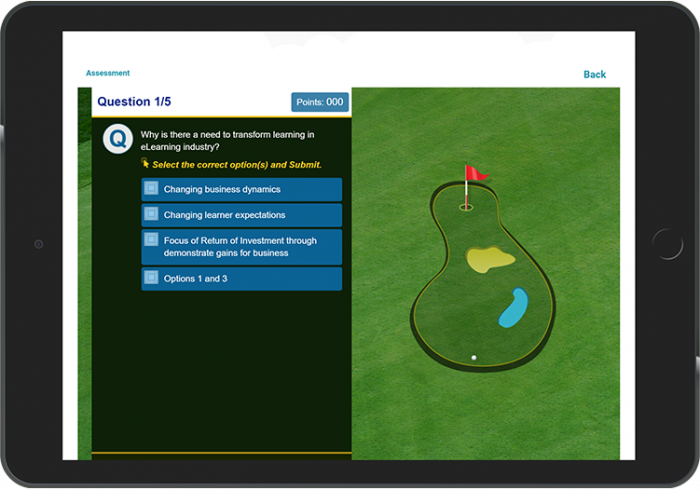
The induction and onboarding journey features 23
microlearning nuggets in varied and very interesting formats.
I have selected a couple of nuggets that use a Virtual
Reality (VR) and animated videos based approach.
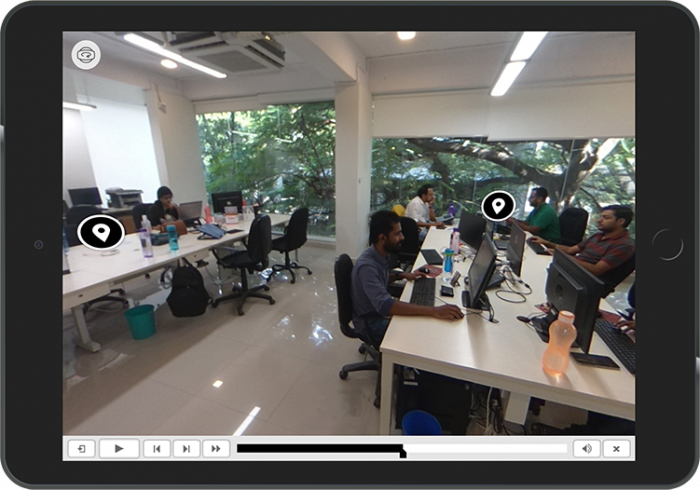
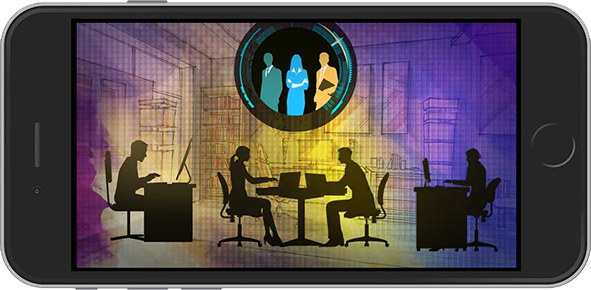
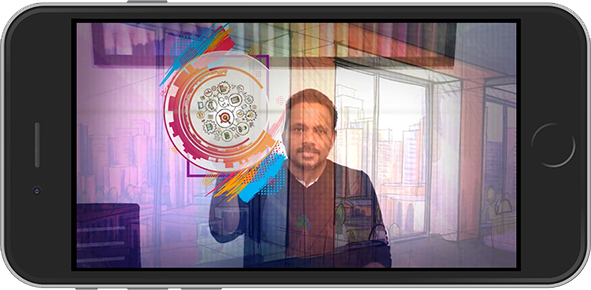
The Impact?
- Learner
Reaction
Resounding positive feedback that the program is engaging, relevant, and in sync with the expectations of modern learners. They also liked the flexibility to review the microlearning assets on their smartphones. - Learner
Engagement
Across the board, we got great feedback from our surveys and through online comments on the microlearning nuggets (what they liked). - Learning
Impact
We got back to a timely cycle of completion of the induction and onboarding program and, thereafter, a better assimilation of the new inductees as per our plan.
I hope this article and the featured gamification use case gives you adequate insights
on how you can convert your disengaged employees to highly engaged and
motivated employees through the stellar combination of gamification and
microlearning (as a gamified learning portal).
Not only can you apply this approach to your induction
and onboarding program, but it also can easily be adapted to your other
corporate training needs.
If you have any queries or need any specific support, do
contact me at apandey@eidesign.net.
No comments:
Post a Comment